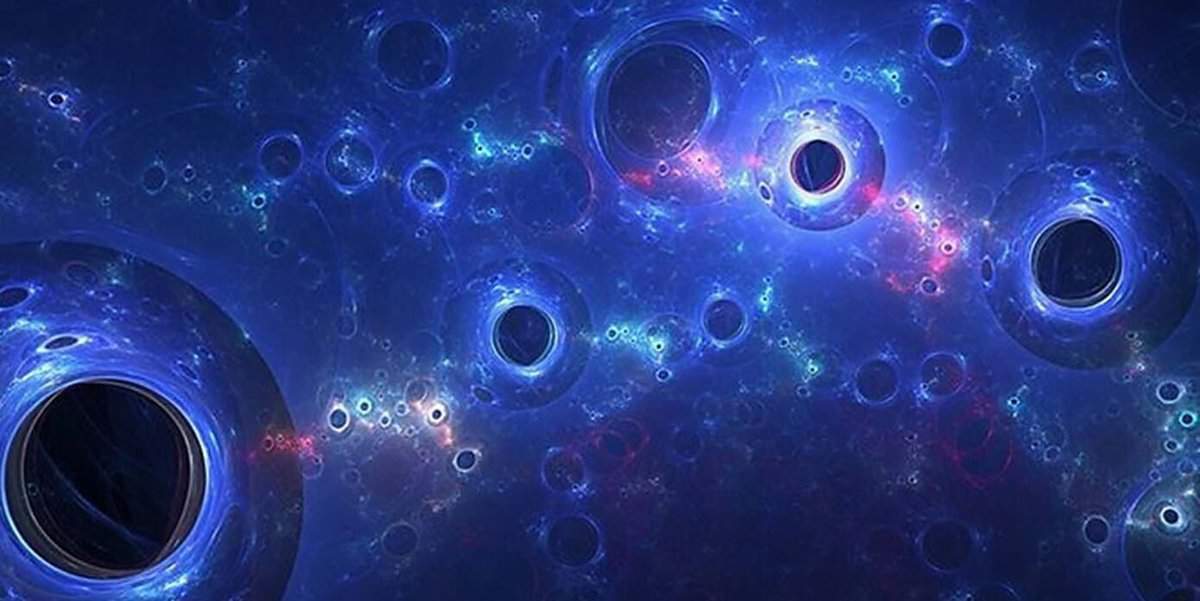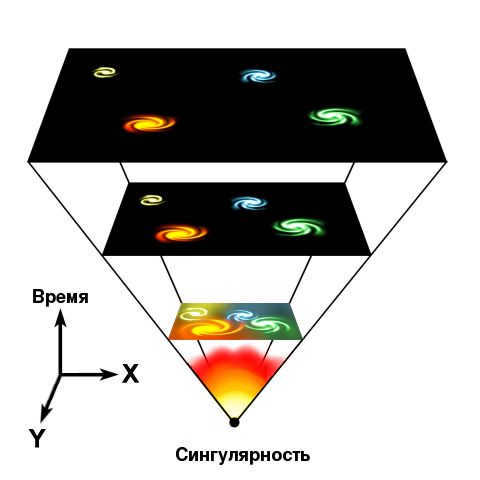
Greetings, esteemed hubra community! As promised following last week’s piece on string theory, today we will endeavor to unveil the enigma and delve into the latest advancements in cosmology. Together, we will explore the arduous journey scientists have embarked upon and discover their ultimate destination in their quest to elucidate the genesis, existence, and fate of our universe. This article has grown substantially during its creation, prompting me to divide it into two parts.
The cosmological constant
In 1916, Albert Einstein formulated the General Theory of Relativity (GTR) with the belief that our Universe should remain largely stationary, with minimal movement. In other words, the distances between stars and galaxies should remain constant over time. However, Einstein’s own equations contradicted this idea, showing that the Universe could not be stationary. To address this, Einstein introduced the concept of the “lambda term”, also known as “the cosmological constant”, which aimed to ensure the stationary nature of the Universe.
The practical implication of the cosmological constant is that empty space is not truly void – it contains a field that interacts with the matter within it, extracting energy from seemingly nowhere. These findings left contemporaries perplexed, and Einstein faced criticism from his colleagues.
In 1922, Alexander Friedman proposed his own universe model that did not incorporate the cosmological constant. However, his model indicated that the Universe must either be in a state of constant expansion or constant contraction. Initially, Einstein held a negative view towards this model.
The identification of a growing cosmos provided a fresh surge of momentum for scientific exploration – it sparked the birth of the Big Bang theory. This revolutionary concept, alongside Friedman’s model, forms the foundation of the modern Lambda-CDM model of the Universe. The Lambda-CDM model incorporates the cosmological constant, dark matter, and dark energy as essential components.
Dark matter
Scientists dedicated significant effort to the Big Bang theory until 1998, as it gradually developed and expanded. However, the fundamental concept remained the same: all matter originated from a single point, and the Universe was born from the Big Bang event many years ago.
Mathematically, the theory was rooted in General Relativity (GR), but it fell short in explaining certain observed phenomena. One such phenomenon was the rapid rotation of the outer edges of galaxies, which exceeded the predictions of Newton’s laws that are a subset of GR.
There are two possible explanations for this phenomenon: either the masses of galaxies are larger than they appear, or gravity decreases with distance at a slower rate than predicted by GR, but in a clever way – not violating the already established cases, but also accounting for the rotation curves of galaxies. In this scenario, scientists opted for the first explanation and introduced the concept of “dark matter” to the cosmological model, which represents the missing mass.
During that time, there was no experimental evidence for dark matter, and two explanations were proposed to account for this:
- Dark matter is composed of imperceptible particles. However, the scientific community is currently questioning the very existence of such particles. Nonetheless, it is believed that dark matter is made up of not only weakly interacting particles, but also significantly massive ones. Scientists have been diligently searching for particles that fit these criteria, but have yet to find any.

Currently, scientists worldwide are conducting experiments involving massive amounts of substance in hopes of detecting something significant. While there have been occasional reports of positive findings, they have all been met with controversy.
Meanwhile, dark matter can be indirectly observed through the phenomenon of gravitational lensing. These observations have even allowed for the creation of a map depicting the distribution of dark matter throughout the universe. (in the provided image, the three axes of the parallelepiped represent the sky’s position in terms of right ascension, declination, and distance from Earth, respectively, increasing from left to right)

Scientists were able to explain the formation of galaxies thanks to dark matter. Initially, it was clear that the collapse of interstellar gas alone was not enough for galaxy formation, and no other known matter could account for it at that time.
The existence of dark matter also had an interesting implication. Calculations showed that its mass was incredibly large, making up to 26% of the total mass of our Universe. This massive amount of dark matter created powerful gravitational fields, which played a crucial role in attracting matter to each other and, consequently, slowing down the expansion of the Universe.
Dark energy
Dark energy is a mysterious force that is believed to be responsible for the accelerating expansion of the universe. It is thought to make up about 68% of the total energy density of the universe. Despite its name, dark energy is not actually “dark” in the traditional sense, as it does not interact with light or other forms of electromagnetic radiation. Its existence was first proposed in the late 1990s, and since then, scientists have been trying to understand its nature and properties. While much is still unknown about dark energy, it is believed to have a negative pressure, which is causing the universe to expand at an ever-increasing rate. This discovery has revolutionized our understanding of the cosmos and has led to new theories and models of the universe.
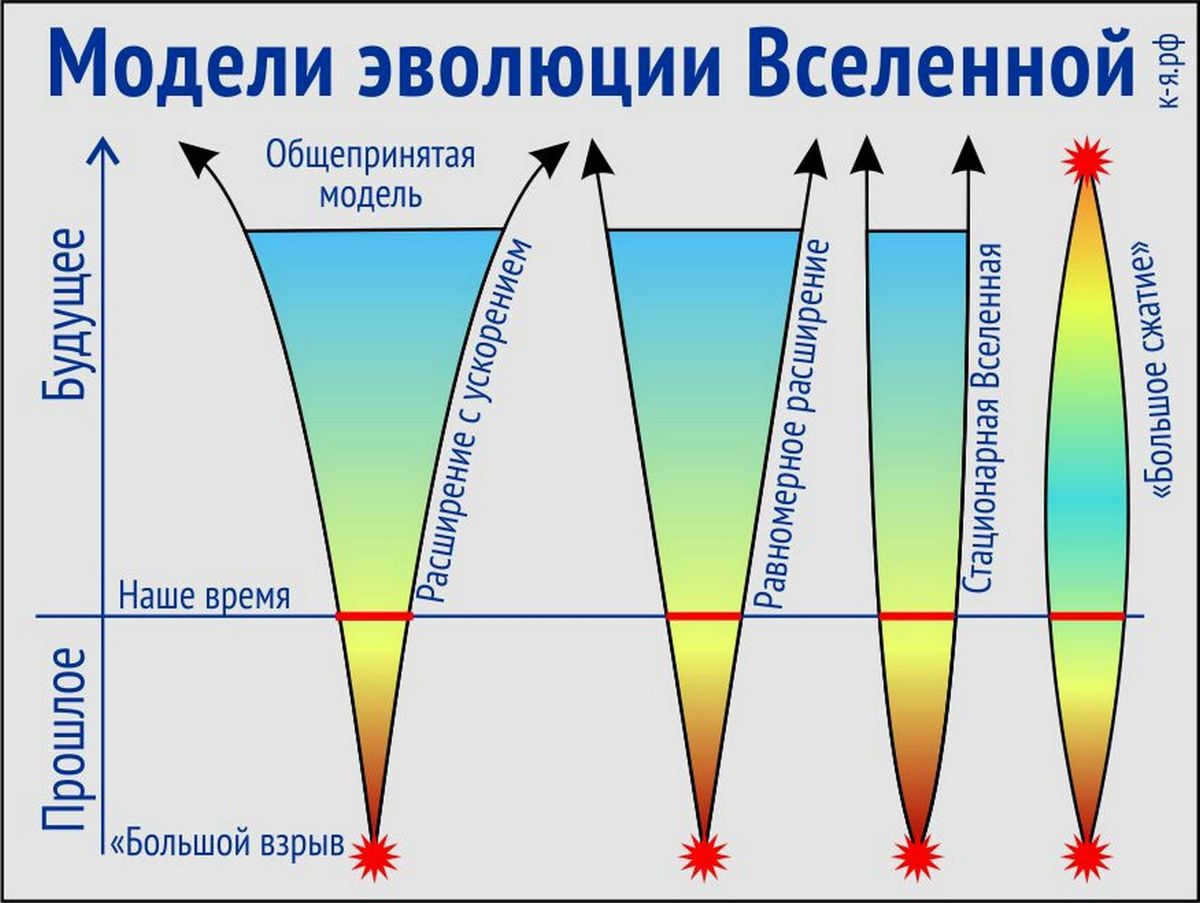
In 1998, while observing supernovae, scientists made a groundbreaking discovery – it was revealed that the Universe had started expanding at an accelerated pace approximately 5 billion years ago. This means that each year, the Universe expands at an increasingly rapid rate, as if being propelled by some unknown force.
As a result, the concept of dark energy emerged. It was introduced as an explanation for the Universe’s accelerated expansion. At that time, dark energy was purely theoretical, as there was little to no information available regarding its nature, unlike dark matter which had already been hypothesized.
Subsequent researchers have proposed various interpretations of the nature of dark energy – one prominent explanation is that it is simply the energy density of the vacuum (as dictated by quantum mechanics). According to the Heisenberg uncertainty principle, even in empty space, quantum fluctuations constantly occur, resulting in the creation and annihilation of particles. While, on average, there are no particles in a vacuum, there is, on average, energy present. This is precisely what led to the introduction of the cosmological constant in the equations of general relativity.
However, currently, there are no reliable methods for calculating the energy density of the vacuum (it turns out to be much, much higher than it should be), which raises doubts about the validity of this hypothesis. Some scientists interpret this as an indication that an adequate description has yet to be found.
Despite this, the cosmological constant serves as a straightforward solution to the issue of a rapidly expanding Universe, as it can be explained by a single numerical value that accounts for various observations. Hence, the prevailing lambda-CDM model incorporates the cosmological constant as a vital component.
Another explanation for the nature of dark energy is that it manifests as a dynamic scalar field that permeates the entirety of the universe (quintessence). The only distinction from the former explanation is that this field is not embedded within space itself, allowing for varying densities across different points. The existence of such a field is anticipated by both the standard model and string theory.
For skeptics, there exists a third choice: dark energy, in addition to dark matter – similar to Ptolemy’s epicycles, these are completely fabricated constructs designed to reconcile the theory, which is flawed, with reality. There are now efforts to explain the accelerated expansion of the Universe without resorting to dark energy, for example, through gravity. However, as astrophysicist Ethan Siegel pointed out:
Even though these alternative ideas receive significant media attention, the vast majority of professional astrophysicists are convinced that dark energy is real, and that none of the competing theories can explain observations with the same level of precision as the standard dark energy theory.
If dark energy does indeed exist in the long term and does not dissipate with time, it could have fascinating implications. Specifically, the expansion of the universe would accelerate, causing objects in close proximity to become increasingly inaccessible due to the limitation on the speed of matter exchange (300,000 km/s from STO). Eventually, these objects would move further apart, reaching distances at which they can never be observed again. In essence, every elementary particle in the universe would ultimately be isolated, separated from the rest of the world by the event horizon. Some even argue that this isolation would tear them apart.
Obscure Substance
Nevertheless, let us delve further into one of the hypotheses, which presents an alternative to both obscure matter and obscure energy, and aims to elucidate both phenomena within a unified framework. This hypothesis is referred to as obscure substance.
It posits that obscure matter and obscure energy are not distinct physical phenomena, as previously believed, and do not possess separate origins, but rather are intimately interconnected and can be viewed as two facets of the same substance.
On the scale of galaxies, obscure substance exhibits behavior akin to obscure matter, while on larger scales it resembles obscure energy. It has been demonstrated that a simple obscure substance with negative mass possesses the requisite attributes to account for both obscure matter and obscure energy. The hypothesis also postulates that the obscure liquid is a unique type of liquid whose attractive and repulsive characteristics are contingent upon the local energy density.
To put it differently, the theory suggests that when there is a dark liquid in the vicinity of matter, it amplifies the gravitational force surrounding it. This phenomenon is always present, but only becomes noticeable when there is an extremely massive object like a galaxy. This explanation is similar to the concept of dark matter and is supported by specific instances of the equations related to the dark liquid.
On the contrary, in regions with relatively low matter content, such as the empty spaces between superclusters of galaxies, this theory predicts that the dark liquid becomes weaker and develops negative pressure. As a result, the dark liquid acts as a repulsive force, akin to the effects of dark energy.
By doing this, the concept of the dark fluid theory goes beyond the concepts of dark matter and dark energy. It proposes a continuous range of attractive and repulsive properties at different densities of matter.
This theory shows great potential as it not only replicates numerous specific scenarios from other theories but also provides significant improvements to them. It may be possible to utilize this theory to explain the recently discovered “dipole repulsion“.
I will discuss the dipole repulsion phenomenon, along with other equally intriguing phenomena, in the subsequent section of this article.
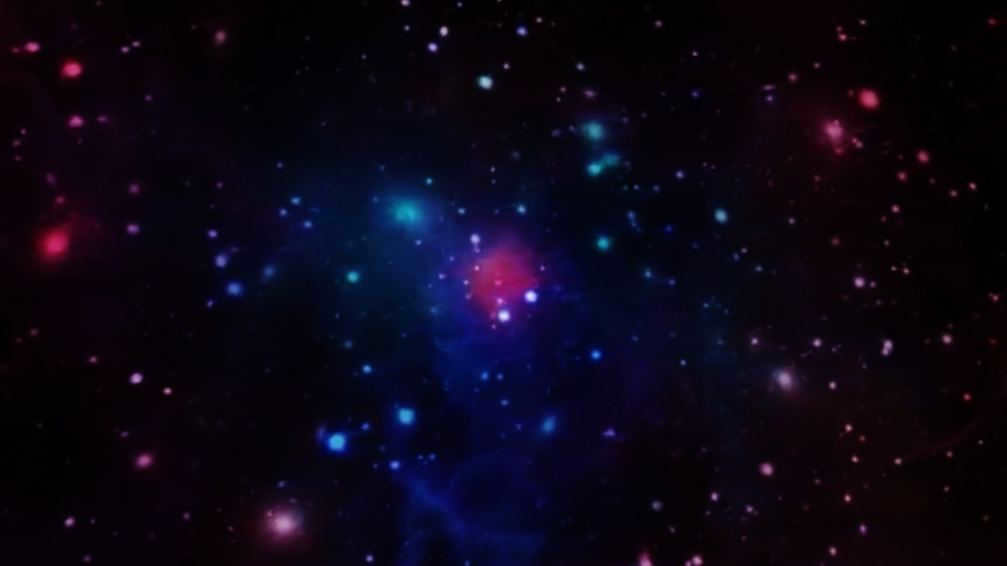
All that we can observe in the universe, including stars and galaxies, accounts for only approximately 4-5% of its total mass!
Composition of the Universe
Based on current cosmological theories, the composition of our universe is as follows: ordinary, or baryonic matter, which comprises all the observable objects, makes up only 5% of the total mass; dark matter, which is detected through its gravitational effects, accounts for 25% of the mass; and dark energy, which constitutes a staggering 70% of the total volume.
The terms “dark energy” and “dark matter” are not entirely accurate translations from English, as they are more literal rather than conveying their true meaning.
Resources related to the subject
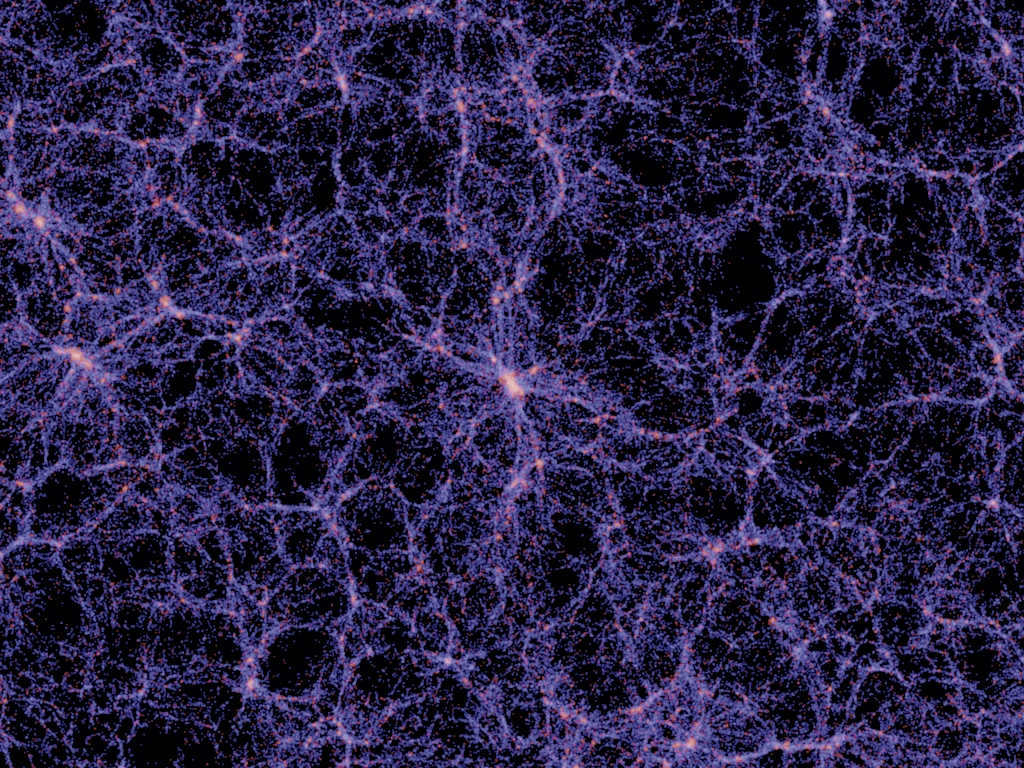
In terms of the physical aspect, these terms simply indicate that these substances do not interact with photons, and they could also be referred to as imperceptible or translucent matter and energy.
A significant number of contemporary scientists firmly believe that delving into the depths of dark energy and matter can potentially provide answers to the overarching query: what lies ahead for our universe?
Dark matter is a mysterious substance that is believed to be composed of particles that are unfamiliar to us on Earth. It shares many properties with regular matter, such as the ability to clump together and interact gravitationally. However, the size of these clumps, known as “galactic” or even “galaxy cluster” clumps, can be much larger than anything we have observed before.
Approaches and techniques for investigating particles of mysterious dark matter
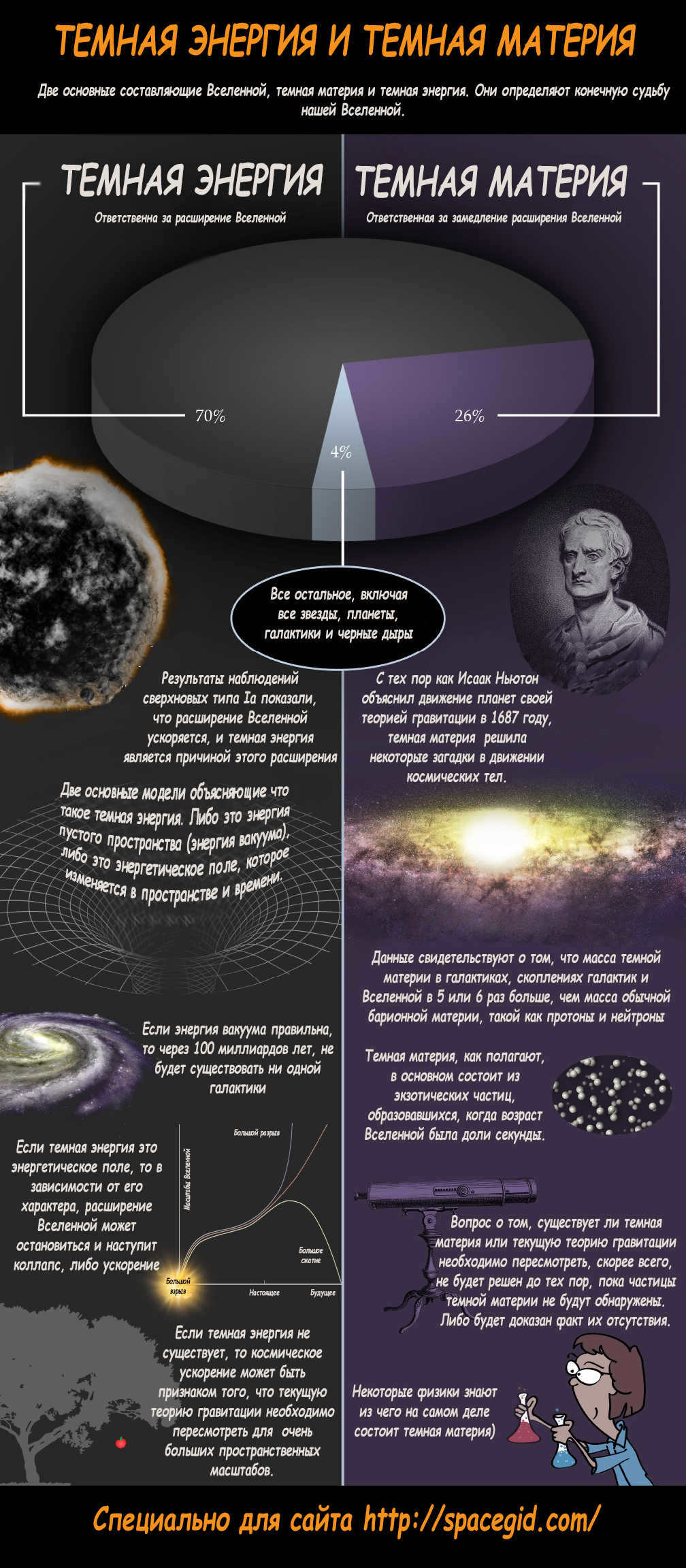
What is the composition of the Universe?
Currently, scientists worldwide are making efforts to detect or create dark matter particles in terrestrial conditions using advanced technological equipment and various research techniques. However, so far these endeavors have not yielded successful results.
Resources related to the subject
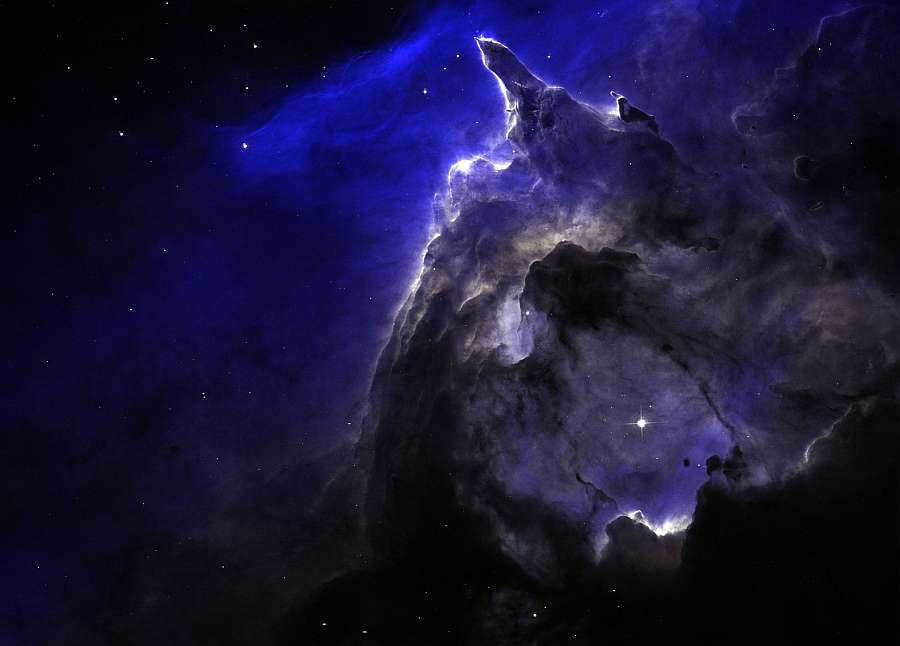
One approach involves conducting experiments at high-energy gas pedals, which are commonly referred to as colliders. Scientists propose that dark matter particles, believed to be 100-1000 times heavier than a proton, could potentially be created when ordinary particles are accelerated to high energies and collide within a collider. Another method focuses on detecting dark matter particles that permeate our surroundings. The main challenge in detecting these particles lies in their extremely weak interaction with ordinary matter, making them essentially transparent. However, there is still some hope that these dark matter particles will eventually collide with atomic nuclei and be observed.
There exist alternative approaches and techniques for studying particles of dark matter, and it is only a matter of time to determine which one will ultimately succeed. Nevertheless, the discovery of these novel particles will undoubtedly stand as a paramount scientific accomplishment.
A remarkable substance defying gravity
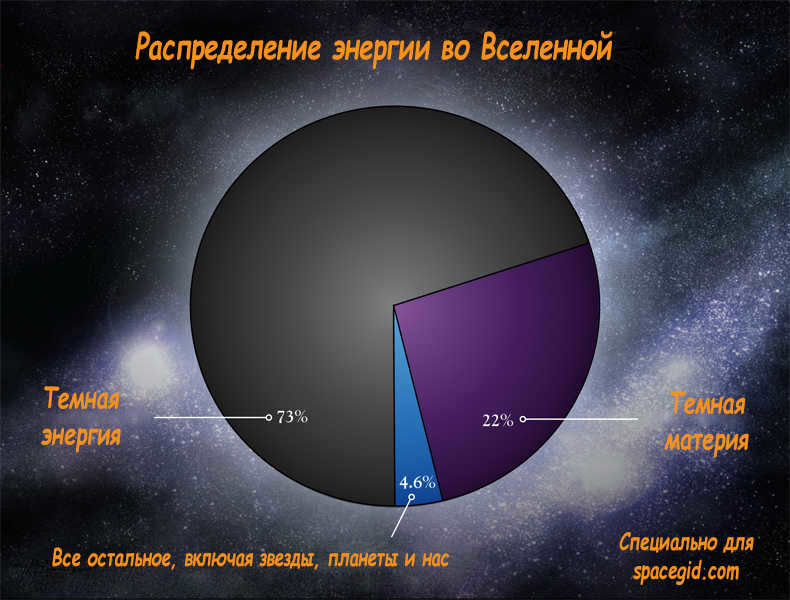
The distribution of energy in the Universe is a fascinating topic to explore. Dark energy, a mysterious substance, is even more peculiar than dark matter. Unlike dark matter, it does not clump together but is uniformly spread throughout the Universe. However, its most intriguing characteristic is its ability to defy gravity, acting as an antigravity force.
Another enigma in the Universe is the nature of dark matter and black holes. These cosmic phenomena continue to puzzle scientists and pose questions about the fundamental workings of the Universe.
Potential candidates for the position of “dark energy”
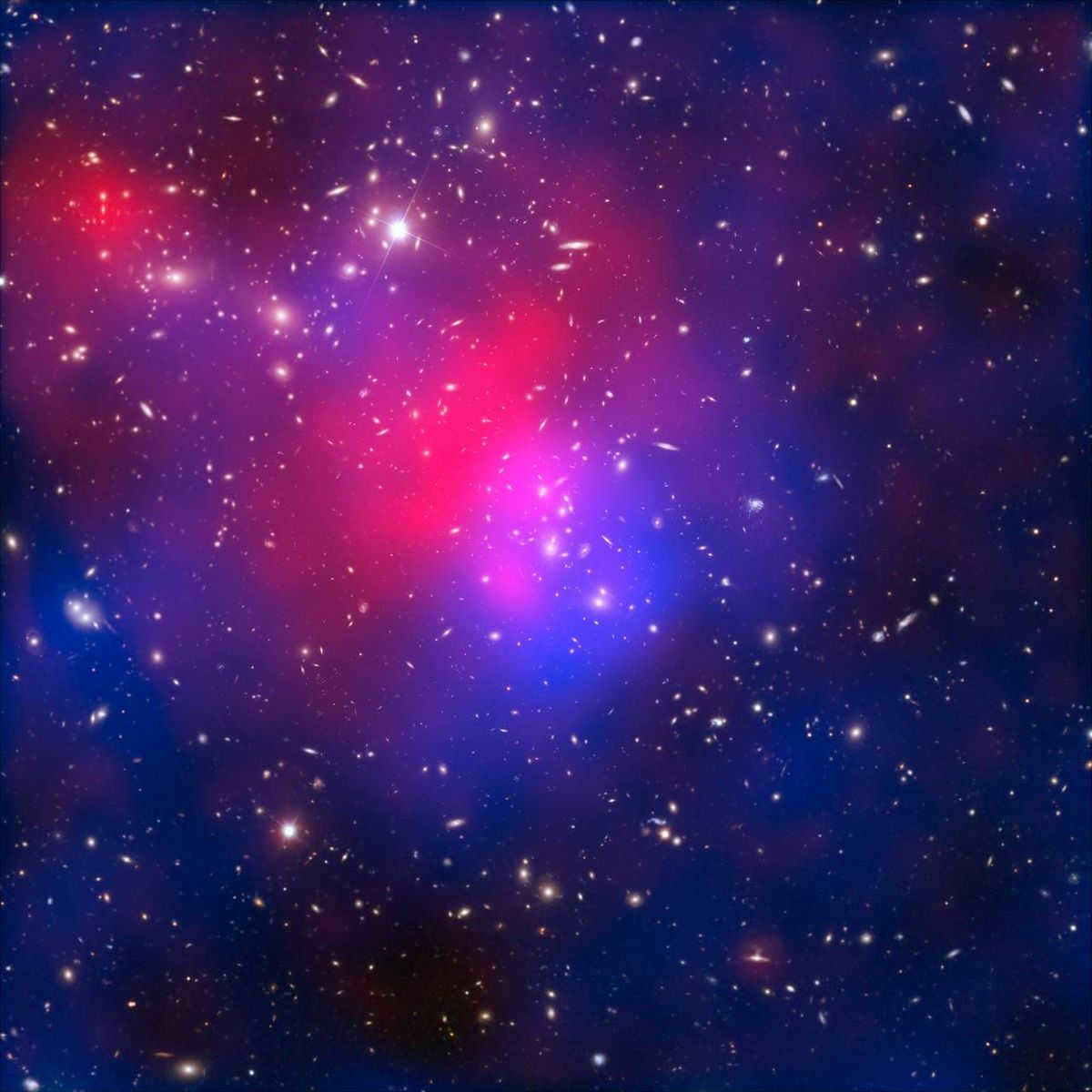
In the Abell 2744 cluster, the mass of the galaxies is a small fraction, accounting for less than 5 percent of the total mass. The gas present in the cluster is incredibly hot, emitting light only in the X-ray range, as shown in the red color in this image. On the other hand, the majority of the mass in this cluster is made up of dark matter, which is invisible and represented by the blue color in this image.
One potential contender for dark energy is the vacuum, which maintains a constant energy density as the universe expands and thus supports the notion of negative pressure within the vacuum. Another proposed contender is “quintessence” – a previously unexplored ultra-weak field that is believed to permeate the entire universe. There are also other possible contenders, but none of them have yet provided a definitive answer to the question: what is dark energy? However, it is already evident that dark energy is something truly extraordinary, remaining as the central enigma of 21st-century fundamental physics.
Did you enjoy this article? Share it with your friends!
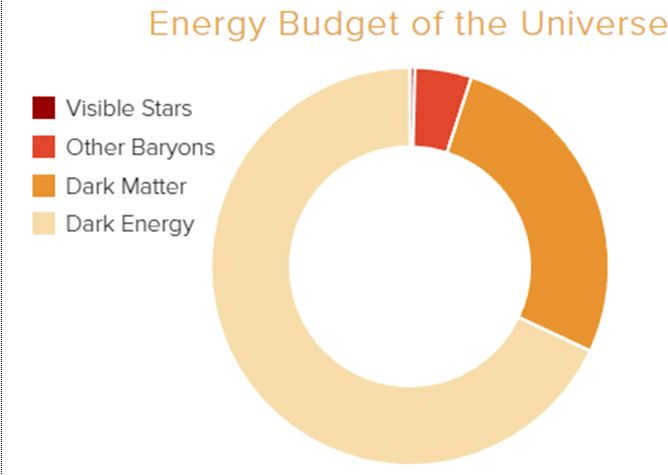
It seems that the concentration of dark matter is primarily found in the spaces between galaxies, and potentially even near the nuclei of these galaxies. Our home, the Milky Way, is situated within this dense region, resulting in a relatively low amount of dark matter surrounding the Earth. However, it is still believed that there is a presence of dark matter in our immediate vicinity, estimated to be around 20-30 hydrogen atoms per cup of water. Remarkably, dark matter effortlessly passes through ordinary matter without any interaction, and its speed of movement is estimated to be at least 200 km/s based on intergalactic observations. This unique property of dark matter also means that it does not interact with photons. As photons are particles of the electromagnetic field, this makes dark matter not only transparent but also impervious to any electromagnetic interactions. Furthermore, dark matter is also unaffected by the strong nuclear force, which helps to maintain the stability of atoms.
Currently, the existence and formation of galaxies cannot be explained without the presence of dark matter, even if we assume that this issue remains unresolved and that dark matter is merely a convenient solution. The problem itself can be summarized quite simply.
Galaxies are collections of stars that are held together by the force of gravity. All stars within a galaxy orbit around its central point, and the faster a star orbits, the stronger the gravitational force needed to maintain its trajectory. By the early 1930s, scientists had accurately measured the velocities of stars at various distances from the center of galaxies, leading to the conclusion that the observed mass of all matter was insufficient to prevent spiral galaxies from collapsing and maintaining their observed shapes.
The Swiss-American astronomer Fritz Zwicky first posed this problem in 1933, suggesting the existence of matter that is not accounted for rather than simply “dark” matter. Zwicky hypothesized that this matter, which exerts gravitational influence but cannot be detected in any electromagnetic spectrum, could be in the form of rarefied interstellar gas, primarily hydrogen. He predicted that as telescopes advanced, these clouds of gas would be discovered. However, the detailed mapping of gas-dust nebulae has since been completed, and it has been determined that dark matter cannot be solely explained by cooled hydrogen. Additionally, in the late 1960s and early 1970s, Vera Rubin and Kent Ford determined that dark matter primarily impacts intergalactic processes rather than intragalactic ones, indicating that it cannot be attributed to an excess mass of any known substance.
Since then, various suggestions have been made about the nature of dark matter, including the remnants of burnt-out stars, black holes, and other exotic objects. In 1991, a new type of object called MACHOs (massive compact objects) was discovered at the tip of the pen. These MACHOs were found in the galactic halo and were proposed by American astrophysicist Kim Greist, who cleverly contrasted them with a different type of dark matter particle called WIMPs (weakly interacting massive particles). WIMPs, which were first described by Michael Turner in 1986, are still purely hypothetical, but MACHO-like objects were actually discovered around 2007. These MACHO-like objects resemble cooled red dwarfs and have a mass of about 0.5 solar masses, although they are still too small to have a significant gravitational impact like dark matter does.
The concept of “hidden sectors” in the Galaxy remains widely accepted, suggesting the existence of undiscovered fermions that share similarities with WIMPs. However, incorporating these fermions into the Standard Model is challenging, making the idea of hidden sectors parallel to the MACHO concept. While it may unveil new states of matter and the presence of such sectors, it is unlikely to provide a complete explanation for dark matter.
There are various theories suggesting that dark matter may not be composed of physical objects, but rather of baryon particles. These baryon particles are mirror counterparts of the particles found in the Standard Model and are compatible with the concept of supersymmetry. Supersymmetry proposes a duplication of the Standard Model, which opens up the possibility for magnetic monopoles, axions, massive neutrinos, and photinos to serve as potential dark matter candidates. The concept of supersymmetric mirror matter gained renewed attention following the observation of anomalies in cosmic ray properties, which subsequently led to a heightened search for neutralinos – the supersymmetric counterparts of neutrinos. Neutralinos are believed to be created through the annihilation of WIMPs, although no such particles have been discovered thus far.
In the early 2010s, amidst the advancements in unverifiable theories at the Large Hadron Collider, there emerged the notion of “coherent states” of dark matter. These hypothetical particles would bear a resemblance to atoms and could potentially form macroscopic structures and stars. This theory assumes the existence of an exotic substance (particle) known as gluonium, which consists of quarks of the same color. If ordinary matter gluonium is discovered (a possible candidate was proposed in 2014), it would shed light on the potential properties of dark gluonium, which is believed to be formed through the annihilation of dark matter.
One of the most significant advancements in understanding “dark atoms” is the concept of O-helium, which was developed in the early 2010s by physicist Maxim Khlopov and his colleagues Andrei Mayorov and Evgeny Soldatov from Moscow.
If dark matter exists in the form of atoms, this theory provides an explanation for its longevity, as it would not have annihilated during ancient times but instead persisted from the origin of the universe until now. According to Khlopov’s hypothesis, shortly after the Big Bang, hypothetical dark particles with a charge of -2 could have combined with helium atoms, creating atom-like structures that are undetectable by current methods. However, these dark atoms could potentially be present in the nuclei of galaxies and account for phenomena such as the consistent emission of positrons. Now, let’s delve into the potential properties of these mysterious dark atoms.
If there were dark atoms, it would revolutionize the way we understand galaxy evolution and star formation. These dark atoms could gather outside of regular galaxies, similar to how stars and galaxies form. The small amount of dark matter within regular galaxies would be quickly drawn to their centers and form black holes. The exact origins of these black holes in the centers of galaxies are still unknown.
The reason why dark particles don’t interact with regular matter may be due to some yet undiscovered fundamental interaction. It’s possible that “on the other side of the mirror,” dark matter replaces the three forces we know – electromagnetic, strong, and weak interactions – and remains connected to gravity.
Generally speaking, the concept of such particles doesn’t appear far-fetched, as it implies an added symmetry in the structure of the microscopic world, while remaining consistent with the laws of physics. Dark matter atoms would form clusters more actively if they didn’t consist of “dark neutrons”, but rather consisted of “dark protons” and “dark electrons”. In such a scenario, the dark equivalent of the periodic table could include only one or a few “elements” suitable primarily for the creation of “dark stars” and dark interstellar gas (similar to helium and hydrogen). These large-scale structures would resemble “dark spiral galaxies”, which, due to their uniform composition, would be predisposed to active star formation and exhibit enhanced thermonuclear reactions. Consequently, at this point, most of the dark stars would have likely burned out, leaving behind remnants similar to MACHO-like objects. On the other hand, dark galaxies would have been comparable to regular galaxies in terms of size and shape, but would have undergone more rapid evolution. Dark galaxies might have been as prevalent as light galaxies in the early universe. In April 2023, a group of American and Canadian scientists even developed a computer model depicting the formation of such stars and galaxies, which aligns with the principles outlined here.
During the preparation of this publication, there has been additional news regarding the discovery made by scientists from Colgate University and the University of Texas, led by Cosmin Ilie, utilizing data from the “James Webb” telescope. They have identified objects resembling stellar islands of dark matter. These objects, known as JADES-GS-z13-0, JADES-GS-z12-0, and JADES-GS-z11-0, formed approximately 300-400 million years after the occurrence of the Big Bang. While they emitted heat, it appears that they did not undergo the thermonuclear reactions that are familiar to us. These objects may provide a glimpse into what extinguished dark stars could resemble.
Dark matter exhibits wave-like behavior
Quantum chromodynamics also proposes that dark matter could be composed of currently unknown minuscule particles with mass. If such a particle were billions of times lighter than an electron, it would generate a very short wave outside of the X-ray spectrum, in accordance with the principle of corpuscular-wave duality. Among the hypothetical particles that have been theorized, the axion, which was postulated by Roberto Peccei and Chlain Quinn in the 1970s, could potentially fulfill this role. According to Massachusetts Institute of Technology physicist Lindley Winslow, if dark matter consisted of a single tiny particle, the waves it produces would be coherent and would appear as a massive wave or cascade throughout the universe. Physicist Tin-Tin Yu from the University of Oregon shares this perspective, but suggests that such a particle could be a “dark photon” that lacks mass unlike the conventional photon. These particles, especially dark photons, would help explain the existence of mass without physical bodies (where all dark mass is equivalent to energy). However, in order to detect such particles, an experiment would need to measure their higher concentration near stars. In 2022, Yu-Dai Tsai, Joshua Ibi, and Marianna Safronova from the University of California, Irvine, the University of Chicago, and the Kavli Institute proposed a design for an experiment that would detect dark matter near Mercury’s orbit.
Exploring the Necessity of Dark Matter and Energy, and the Future of Our Universe
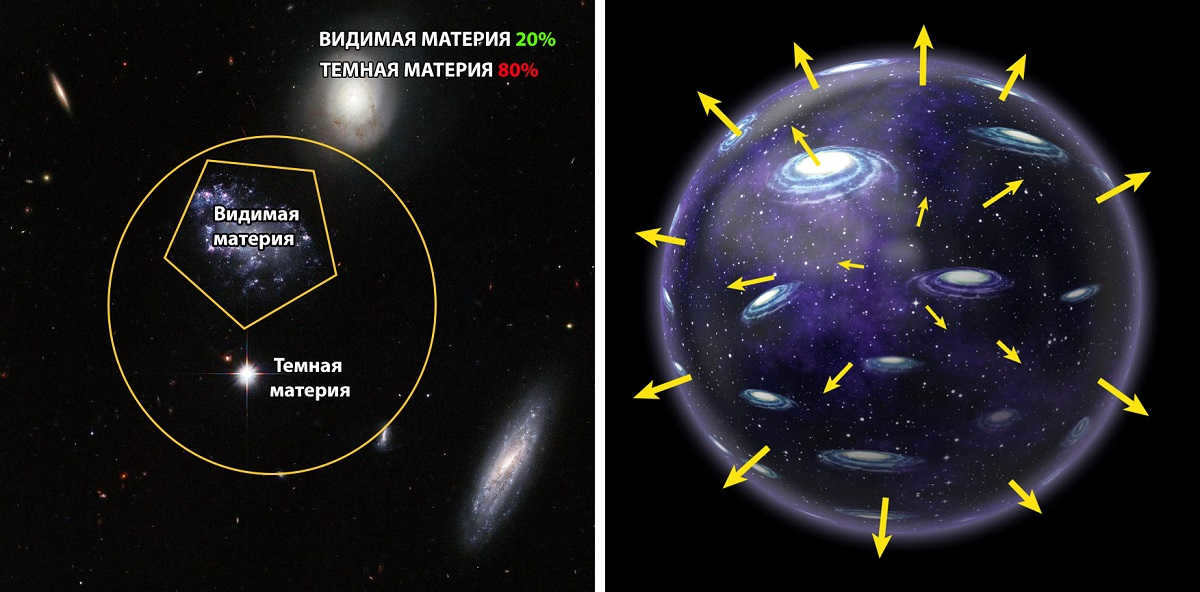
Throughout history, astronomers and scientists have continuously contemplated significant inquiries. Are there any other beings in the vast expanse of the universe apart from us? How do all things interconnect with each other? Could it be plausible that the cosmos consists of elements that remain unknown to us? However, in recent times, there has been a surge in inquiries about dark matter. What precisely is it, and why are scientists diligently seeking it? Moreover, what does the concept of the “dark flow” entail in the grand scheme of our Universe?
Imagine that you are a graduate of an Intergalactic High School from the Andromeda galaxy and you have enrolled in the Universal University of the Milky Way galaxy with a friend. You may want to visit your family and friends during holidays and weekends, which means you will have to travel from one galaxy to another. However, each time you return to Andromeda, you notice that the cost of the trip has increased compared to the previous weekend. And the previous trip was also more expensive than the one before.
At this point, you might start to suspect that something is not right. And you would be correct. The reason behind this is that each time you travel, the distance you cover becomes greater and, as a result, the trip takes longer. But how is this possible if the starting and ending points remain the same? The answer lies in the mysterious realm of dark matter.
Understanding and explaining dark matter and energy can be a complex task. Even the world’s top scientists are uncertain about the nature of these phenomena. Their existence can only be proven through their impact on the universe.
So, how exactly does dark matter function? And what is dark energy? Furthermore, why does the journey back to Andromeda take progressively longer each time?
Below, you will find several facts that shed light on what scientists currently understand about dark matter and energy, as well as their potential effects on our universe and the future of humanity as a whole.
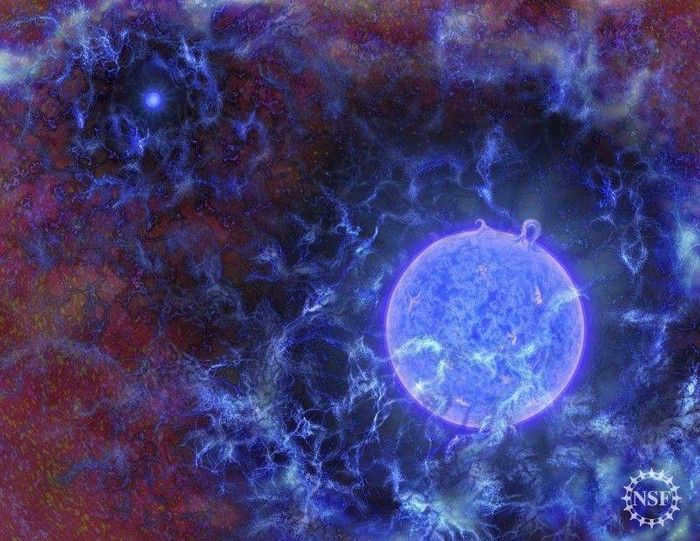
RAGER FULLER / NATIONAL SCIENCE FOUNDATION
Textbooks do not provide reliable information about the composition of the Universe.
In educational institutions, we are taught that the Universe consists of atoms. We learn about protons, neutrons, and electrons, which are considered the fundamental building blocks of all matter. However, scientists have made significant discoveries that go beyond the scope of what was taught in class.
It has been revealed that non-atomic matter makes up ten times more of the Universe than what is visible. Only approximately 4.6% of the Universe is composed of baryonic matter, which includes protons, neutrons, and electrons. Modern scientists propose that dark matter accounts for 23.3% of the cosmos, while the remaining 72.1% is filled with dark energy. These values can naturally vary.
Invisible dark matter and dark energy constitute approximately 96% of the universe

When gazing at the night sky and witnessing the dazzling display of billions of stars within our galaxy alone, it becomes clear that the cosmos is teeming with activity. This becomes even more apparent when considering the inclusion of planets, comets, and other celestial bodies that gracefully float through the expanse of outer space.
However, this awe-inspiring sight is just a fraction of the grandeur that awaits exploration. Our Milky Way, while magnificent in its own right, is merely one galaxy among an unfathomable number of galaxies in the vast Universe. Each of these galaxies, much like our own, is home to countless stars and planets, further emphasizing the vastness of the cosmos.
When confronted with this realization, one cannot help but be humbled by the immensity of the Universe and the unlimited possibilities that lie within.
What exactly is dark matter?

In the Star Wars universe, dark matter is portrayed as the mystical Force that binds all things together. However, in the realm of scientific inquiry, the nature of dark matter is far more complex and elusive. Unlike ordinary matter, dark matter does not interact with light in any conventional way. It neither emits, reflects, nor absorbs light.
Scientists have exhaustively examined all the potential cosmic culprits in an effort to unravel the mysteries of dark matter, but none of them fully satisfy the criteria. From axions to black holes, none can account for the gravitational effects attributed to dark matter.

The binding force of the universe lies in dark matter

Due to its immense gravitational influence, dark matter has an impact on every aspect of the cosmos. The gravitational pull it exerts causes the elements within space to converge and form galaxies. These galaxies then merge with other galaxies to create galaxy clusters. Once these clusters are formed and begin to rotate, it is dark matter that keeps them intact and prevents them from dispersing into the vast expanse of outer space.
Imagine if you were to swing a tennis ball attached to a string above your head. In this analogy, the tennis ball represents a galaxy, and you symbolize gravity. If the tennis ball were as heavy as a bowling ball, your gravitational force alone would not be enough to prevent it from breaking free and propelling itself into the void. Dark matter is the essential component that strengthens the string and ensures that objects remain securely in place.
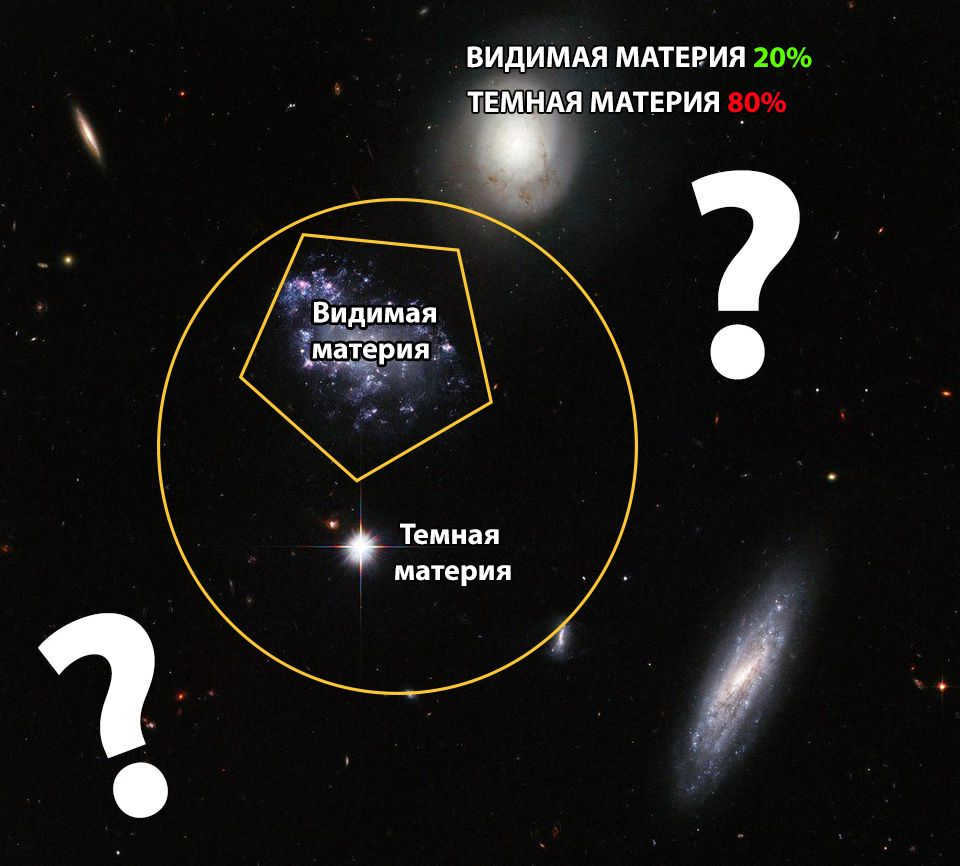
So what is the composition of the remaining parts of the cosmos? The answer lies in dark energy! Dark energy accounts for approximately 68 to 72% of the universe’s entirety. However, unlike dark matter which exerts gravitational pull like a cosmic magnet, dark energy operates in the opposite manner by exerting a repulsive force, pushing celestial objects further apart from each other.
By taking a broad view of the universe, one could metaphorically describe it as a constant battle between two opposing forces. On one hand, there is a concerted effort to maintain cohesion and unity, while on the other hand, there is an equally strong force pushing for dispersion and separation.
What exactly is dark energy?
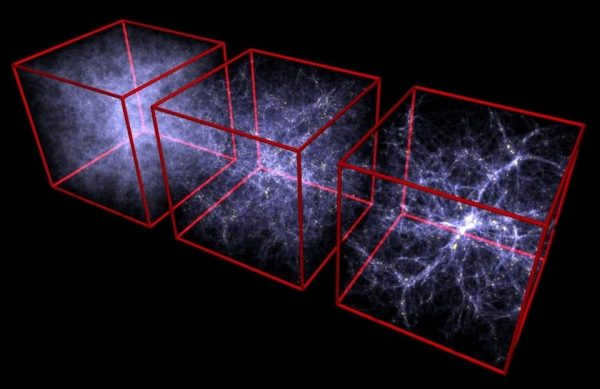
Scientists are still uncertain about the true nature of dark energy! It bears resemblance to the enigmatic counterpart of dark matter, except for the fact that dark matter generates attractive gravitational forces while dark energy produces repulsive gravitational forces. Essentially, it can be considered as anti-gravity. Consequently, dark energy works to push objects further and further away from each other, ultimately causing the expansion of the universe. It’s almost as if the universe is akin to a balloon that expands when filled with air.
How do scientists detect the presence of dark matter if they can’t observe it directly?
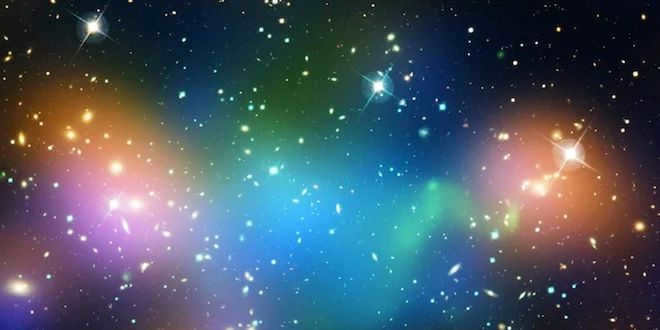
It’s akin to the phenomenon of the “walking tree”: we observe trees moving a certain distance on their own, despite lacking legs. However, there must be a rationale behind their gradual motion. This parallels the behavior of dark matter. By employing gravitational lensing, scientists are able to discern the distortion of light caused by dark matter.
Similar to how we understand that the gravitational force within black holes is so intense that even light cannot evade it, scientists comprehend that when dark matter generates enough gravity, it alters the trajectory of light that interacts with it.
What is the simplest way to visualize the structure of our universe?
To gain a clear understanding of the workings of our Universe, one can simply observe a globe. Let’s imagine that this globe represents our Universe, with the land areas symbolizing galaxies that are bound together by dark matter. In a similar fashion, water on the globe represents dark energy, which constitutes 70% of the planet’s surface in our Universe.
Now let’s envision the globe expanding while the galaxies remain the same. As a result, the galaxies gradually move apart, mirroring the expansion of the world’s oceans. Consequently, the distance between two islands or continents increases over time. It is worth noting that dark energy is not responsible for tearing apart our planets or galaxies, but rather for ensuring the continuous expansion of our universe.
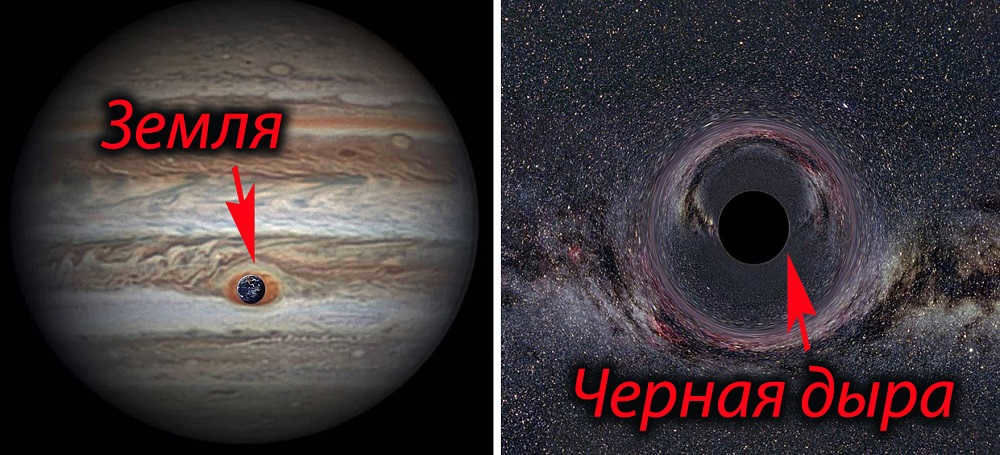
Unconventional Approaches are Needed for Measuring Distance in Space
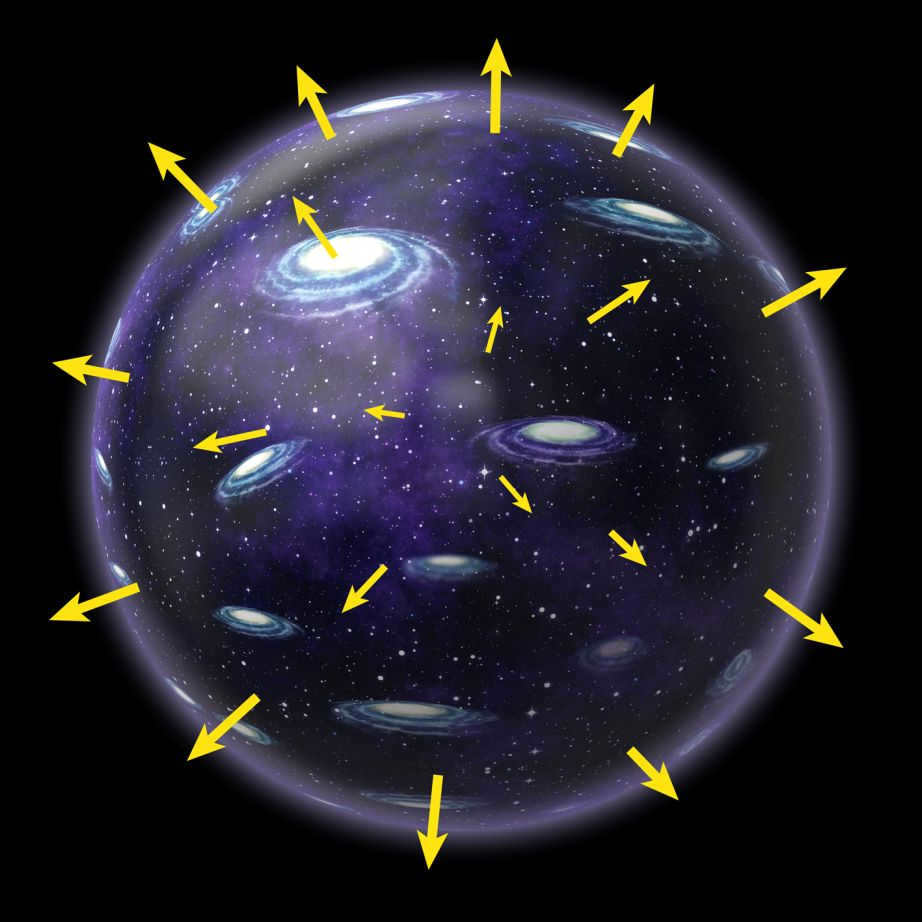
In this world, any individual has the ability to grab a ruler or tape measure in order to determine the distance between two objects. However, when it comes to measuring the distance between planets or even galaxies, scientists have a different approach. They rely on the light emitted by specific stars.
It’s akin to determining the distance between two cars at night by gauging the brightness of their headlights. As the cars come closer, their lights become brighter. This is the same method employed by Edwin Hubble to recognize that the stars he observed were not part of our own galaxy.
Edwin Hubble, a young astronomer, forever altered our understanding of the universe
On October 6, 1923, Hubble made a groundbreaking discovery of galaxies that existed far outside of our own Milky Way. These galaxies were composed of billions of stars and planets, each with their own unique solar systems. This revelation completely surpassed human imagination and forever changed our understanding of the universe.
As scientists continued to explore the cosmos, they encountered more and more enigmas. One such mystery that still plagues researchers today is the concept of dark matter. However, thanks to the Hubble Space Telescope, scientists have been able to approach a potential solution closer than ever before.

Fritz Zwicky, an astronomer, conducted research on the movement of galaxies within a cluster. His findings showed that the speed of these galaxies exceeded the gravitational forces acting upon them.
Using an analogy, it is similar to riding a fast-spinning merry-go-round without a seat or safety straps – you would be thrown off. Zwicky reasoned that the only explanation for this discrepancy was the presence of additional matter, which he referred to as “dark matter,” even though it was invisible to the naked eye. Therefore, in 1933, Zwicky discovered and coined the term “dark matter.”
Dark matter holds significant clues about the beginnings of life on our planet.
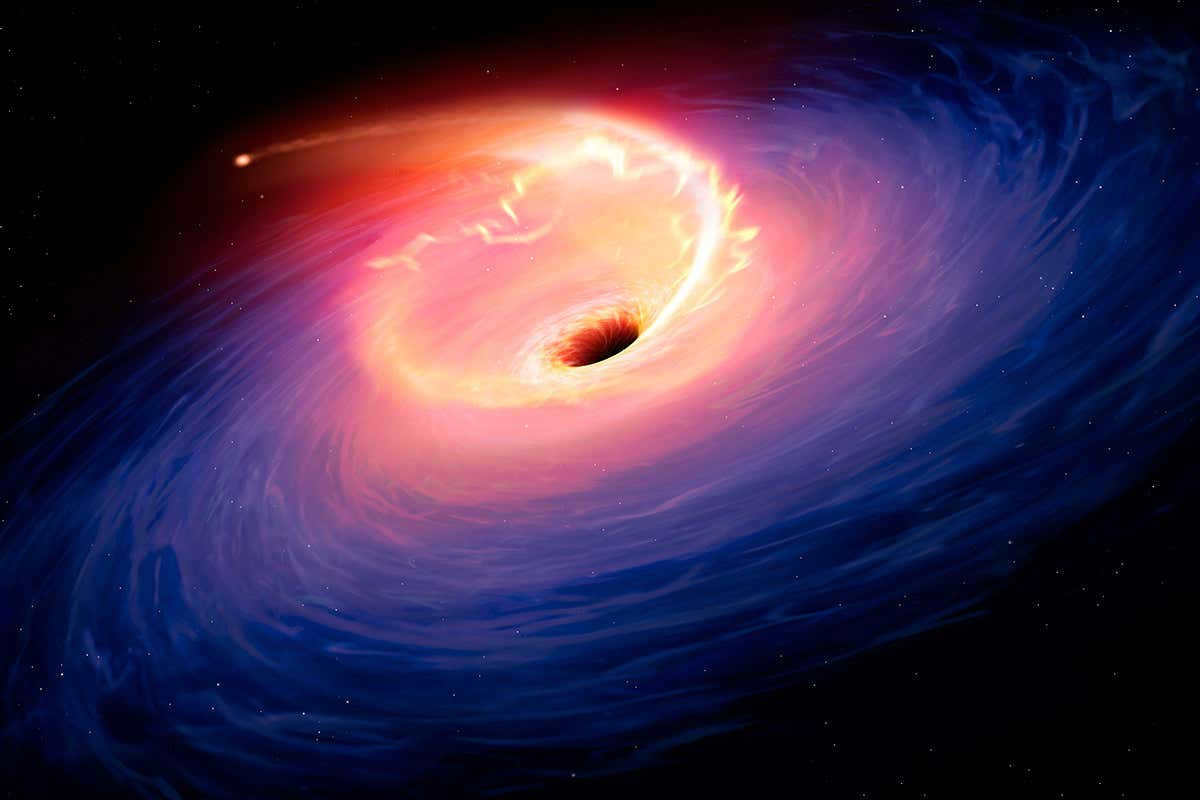
MARK GARLICK/SCIENCE LIBRARY
If scientists were capable of detecting and analyzing the enigmatic substance known as dark matter, they would possess the ability to peer into the past, akin to gazing through a time portal, and witness the events that unfolded a mere fraction of a second following the cataclysmic event known as the Big Bang. It was at this pivotal juncture that the cosmos commenced its expansion, birthing the foundation upon which everything we perceive today was constructed.
However, following the cosmic explosion, an additional span of approximately 380,000 years would elapse before subatomic particles would commence their process of aggregation, ultimately culminating in the formation of cosmic structures, facilitated by the gravitational influence of the mysterious dark matter, and eventually giving rise to galaxies.
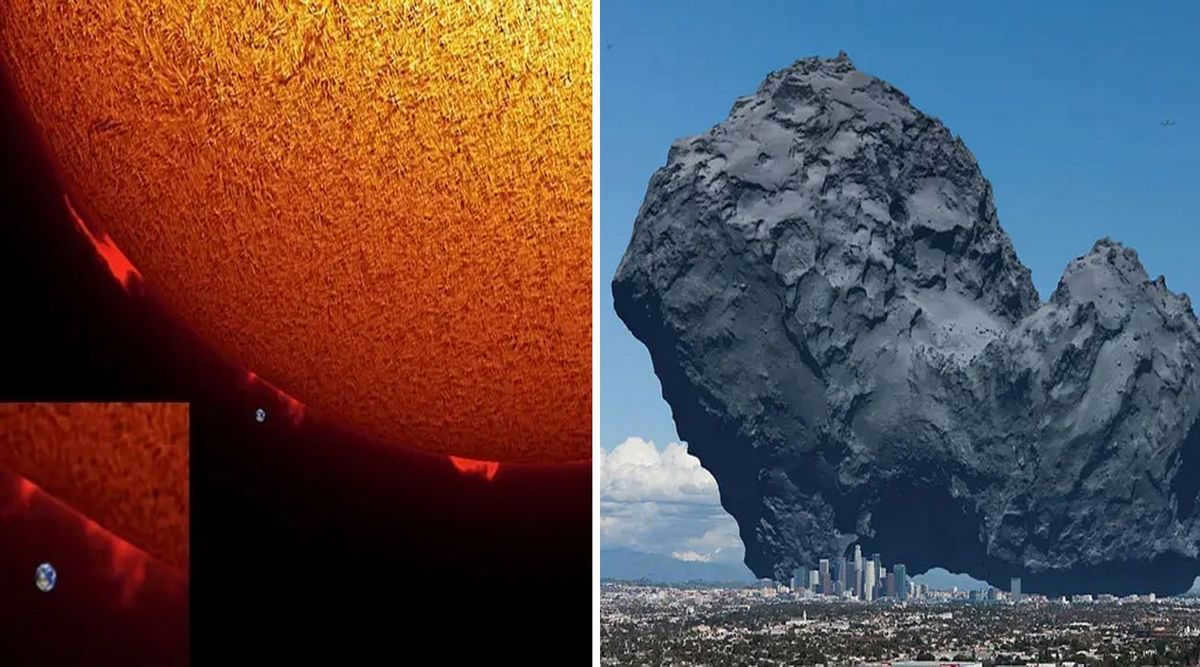
Dark energy might lead to the destruction of the entire universe

Lucy Reading-Ikkanda / Quanta Magazine
Despite the potential destruction of the universe by dark energy, there is no need to panic just yet. This cataclysmic event is not projected to occur for at least a trillion years, leaving ample time for significant scientific advancements. In fact, it is even plausible that scientists may discover the means to create an entirely new universe within a laboratory.
In the interim, it is also plausible that dark energy will continue to exert its influence, causing galaxies to drift further apart. Eventually, our own Milky Way galaxy may find itself isolated in a vast expanse of darkness, losing heat and gradually succumbing to freezing temperatures.
Is it possible for the universe to destroy itself?
The discovery made by Edwin Hubble, the first person to observe the expansion of the Universe, was a significant breakthrough. Initially, scientists believed that the expansion would eventually slow down, come to a halt, and then reverse, much like a ball being thrown into the sky and then falling back down once it reached its highest point.
However, the scientific community was taken aback when they realized that the expansion of the universe is actually accelerating, rather than decelerating. This unexpected phenomenon is attributed to the increasing repulsive gravity of dark energy, which counteracts the weakening attractive gravitational force of dark matter as galaxies continue to move farther apart.
However, there are some scientists who hold the belief that at a certain point, the rapid expansion will come to a halt and reverse, closing in just as quickly as the universe was initially expanding. This concept is referred to as the theory of the Great Compression.
As our understanding grows, so too does our universe
Throughout history, there was a widespread belief that the Earth was flat. Sailors were afraid that if they ventured too far into the ocean, they would sail off the edge of the world. However, it was not Christopher Columbus who proved the Earth’s spherical shape, but rather astronomers who discovered that our planet is not flat and instead orbits around the Sun.
We have a general understanding of the composition of our planet, solar system, and stars. We also have some knowledge about the makeup of galaxies, which consists of stars and planets similar to ours. It is not hard to imagine the composition of the Universe, considering it is a vast collection of numerous galaxies. However, what is surprising is that 95% of the Universe is composed of something that is invisible and intangible, yet we are confident in its existence. Introducing dark energy and dark matter.
This article was originally published in the journal OYLA NO. 2(30). You can subscribe to the print and online versions of the journal here.
In 1929, the renowned American astronomer Edwin Hubble made an extraordinary breakthrough in the field of science when he confirmed the theory of the expanding universe. This concept had already been put forth by the Russian physicist Alexander Fridman. Hubble was able to establish a direct correlation between the speed at which galaxies move away from us and their distance. According to his findings, the farther a celestial object is from our vantage point, the more rapidly it is receding.

An illustration depicting the correlation between velocity and distance (based on Hubble’s research).
Astronomers conducted a study on the distance and velocity of 46 galaxies. However, due to measurement errors, they obtained a flawed estimation of the constant – approximately 500 km/s per megaparsec (the current value is 68 km/s per megaparsec).

Hubble’s discovery effectively disproved the static models of the Universe, which even Albert Einstein had previously supported. In these models, the Universe is assumed to exist eternally and remain unchanged, whereas in dynamic models, it undergoes some form of change over time. Friedman proposed a model in which the Universe is expanding, but at a decreasing rate (his ideas will be discussed later). This implies that there was a starting point for this expansion.
It is worth mentioning that the widely accepted age of the Universe is calculated using the Hubble equation, by dividing distance by velocity, and is the reciprocal of the Hubble constant:

Physicists proposed a hypothesis that the reason for the expansion was a violent disturbance, likening it to an explosion where matter is scattered in space like fragments of explosives. This occurrence was later termed the Big Bang. Scientists were curious about how the objects dispersed. In order to comprehend this, they needed to grasp the forces that propelled them after the explosion. We are aware of only four types of interactions: the weak (with a radius of 10-18 meters), strong (with a radius of 10-15 meters), electromagnetic, and gravitational. Only gravity has the capability to exert influence at such distances and scales. Physicists believed that it was gravity that would eventually decelerate the expansion to a complete halt and ultimately initiate the reverse process – compression.
Physicists made a fascinating discovery in 1998 when they found that the Universe is expanding at an accelerating rate. This conclusion was reached through careful observation of the bursts of Type 1a supernovae, which are incredibly distant. Type 1a supernovae are actually thermonuclear explosions, and what makes them particularly interesting is that they all have the same peak brightness. This means that if you observe two supernovae with equal brightness, they are at the same distance from you. By measuring the intensity of the light emitted by these supernovae, you can determine their distance: the brighter the light, the closer the object, and vice versa.
Physicists have conducted a comparison between the observations of distant supernovae that were made a century ago and the new flares. The results of the comparison have shown that the new flares are less bright, indicating that they are located farther away than what Hubble’s law predicts. This suggests that these flares are moving away from us at an accelerated pace. Therefore, it can be concluded that the Universe is expanding at an accelerating rate. As a result of this groundbreaking discovery, Saul Perlmutter, Brian Schmidt, and Adam Riess were awarded the Nobel Prize in Physics in 2011.
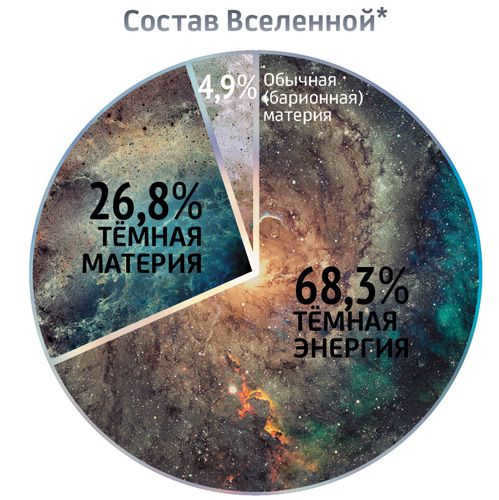

* The information is derived from the analysis of relic radiation, which is the temperature of microwave radiation distribution across the celestial sphere, as observed by the WMAP (Wilkinson Microwave Anisotropy Probe) spacecraft in 2003.
In the mid-1930s, a Swiss astronomer named Fritz Zwicky conducted measurements on the rotational speeds of galaxies within the massive Veronica’s Hair cluster. The findings were so astounding that many of Zwicky’s colleagues initially dismissed them, believing that he had misinterpreted the data. The observed angular velocity was three times greater than what was predicted by theory.
However, subsequent independent measurements confirmed the same result, dispelling any accusations of scientific dishonesty against Zwicky. The only plausible explanation for this phenomenon was the presence of additional objects within Veronica’s “hairstyle” whose mass was influencing the rotation. Unfortunately, the limitations of optical technology at the time prevented these objects from being observed and accounted for.
Graph illustrating how the angular velocity of rotation of a standard spiral galaxy varies with the distance from its center
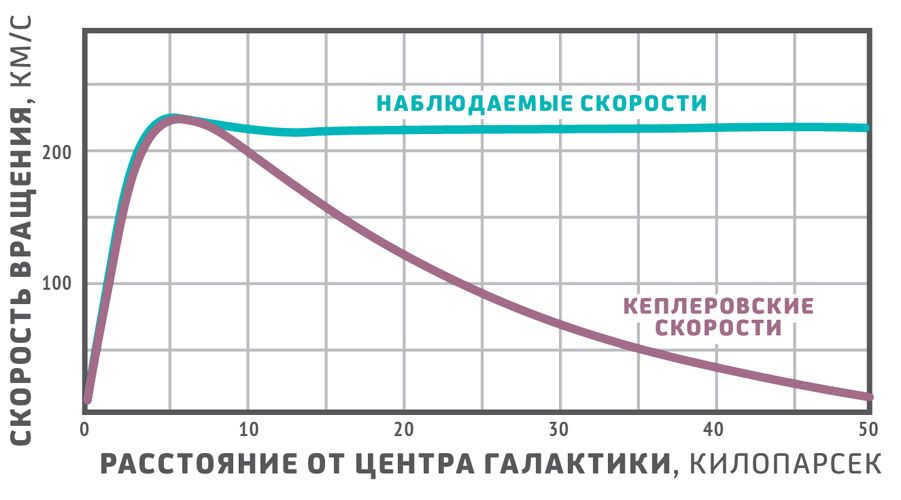
The high rotation speed of the outskirts of galaxies can be explained by the presence of additional mass, although we do not observe such objects.
The cluster has been the subject of extensive study. Veronica has been tested with all the latest astrophysical methods, including radio astronomy, gamma-ray and infrared telescopes. Scientists have discovered large clouds of interstellar and intergalactic gas, as well as several powerful X-ray sources. However, these objects only caused a slight rotation of the cluster, not three times the speed! What could it be? This mysterious invisible substance has been named dark matter (dark matter). It is distinguished from luminous matter, which we can see.
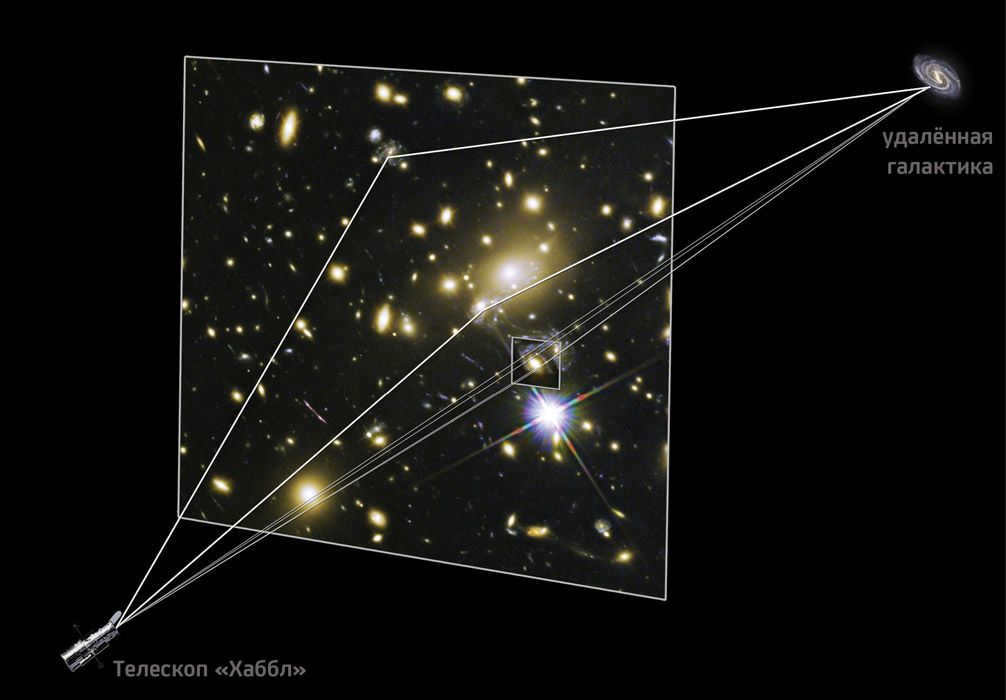
Clusters of galaxies, known as large clusters, have such a tremendous mass that they cause a distortion in the surrounding space and alter the path of light from objects situated beyond them when observed. This occurrence is commonly referred to as gravitational lensing. The visual representation illustrates the manner in which the light emitted by a remote galaxy is gravitationally lensed by a cluster.
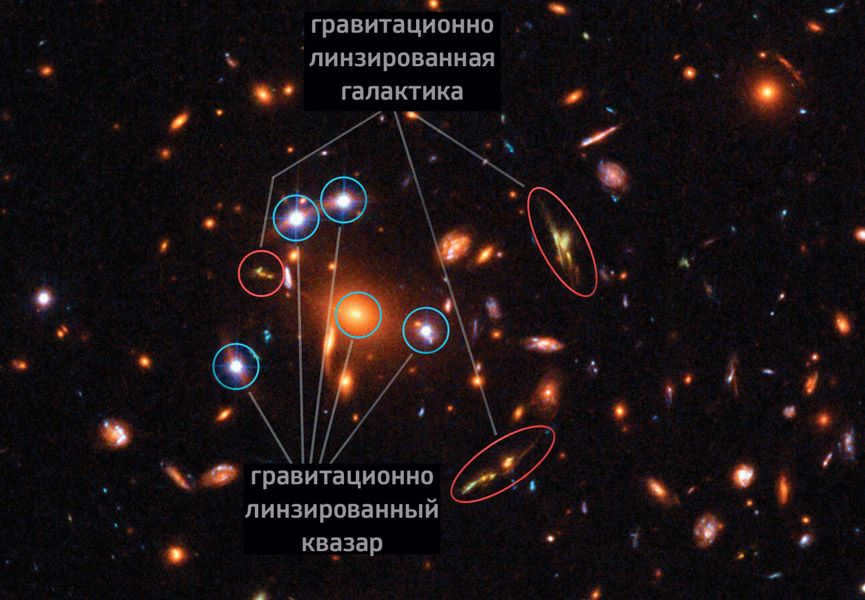
The identical galaxy is indicated by the red circles, while the blue circles indicate the identical quasar. Gravitational lensing also produces a comparable phenomenon. The Hubble telescope provided the image of the SDSS J1004+4112 galaxy cluster.
The mystery was further elucidated by the presence of dark matter. In the 1970s, an American astronomer named Vera Rubin, who was associated with the Hubble school, conducted a series of measurements on the rotational velocity of matter around galactic centers. Contrary to expectations and Kepler’s laws, which state that the rotational speed of galactic objects should decrease in proportion to the square root of the distance from the center, many stellar clusters exhibited nearly constant speeds regardless of distance. Detailed calculations have revealed that this phenomenon can be explained by assuming that the mass of the galaxy is significantly greater and that the distribution of matter is highly unconventional – its density does not decrease with distance from the center and remains relatively constant, in stark contrast to the visible matter of stars and interstellar gas.
Allow’s consolidate our understanding of dark matter. Initially, there is a plethora of substantiation supporting its existence. Secondarily, it engages with the force of gravity. Lastly, it is exceedingly prevalent (to the extent that it possesses a universal scope of impact).
There is roughly an equal amount that is likely attributed to regular matter, specifically baryonic dark matter. This substance can manifest as cooled stars with exceptionally low surface temperatures (known as brown dwarfs), planetoids, or hot gas clouds that only emit X-rays.
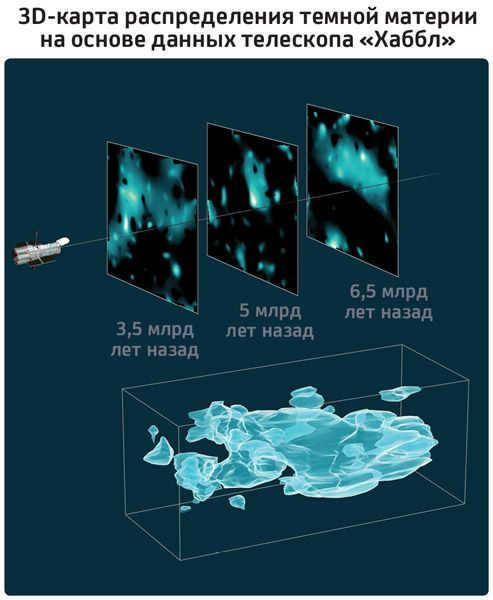
WIMP (Weakly Interacting Massive Particles) is the leading contender for the role of “the rest”. These particles, which have a mass many times greater than protons and neutrons, behave in an elusive manner. They do not interact with ordinary matter in any significant way, instead favoring gravity as their main interaction.
Detecting WIMP, which stands for Weakly Interacting Massive Particles, has proven to be a challenging task. However, it’s worth noting that similar doubts were expressed about neutrinos in the past. Scientists have proposed a search technique based on the idea that as the Earth moves with the Sun in its orbit around the center of the Galaxy, it passes through a veil of WIMPs, and a very small number of these particles may interact with ordinary atoms. To illustrate this concept, imagine walking in the rain: the faster you run, the more raindrops you will “catch.” The same principle applies to the proposed experiment. The number of collisions between WIMPs and ordinary atoms is expected to vary throughout the year due to the different speeds at which the Earth moves through this “WIMP curtain.” In 2008, physicists from the Italian laboratory Gran Sasso, known for its underground neutrino detector called Macro LVD, reported the orbital velocities of the Earth and the Sun. However, no confirmations of WIMP interactions have been made yet, so it is premature to claim the discovery of WIMP.
Physicists then focused on manipulating the gas pedals of elementary particles. They reasoned that, according to the equivalence of energy and mass (E = mc2), collisions between high-energy particles could potentially lead to the creation of particle-antiparticle pairs (including WIMP) whose combined mass would match the total energy of the colliding particles. However, even after conducting accelerated experiments, the desired outcomes were not achieved.

